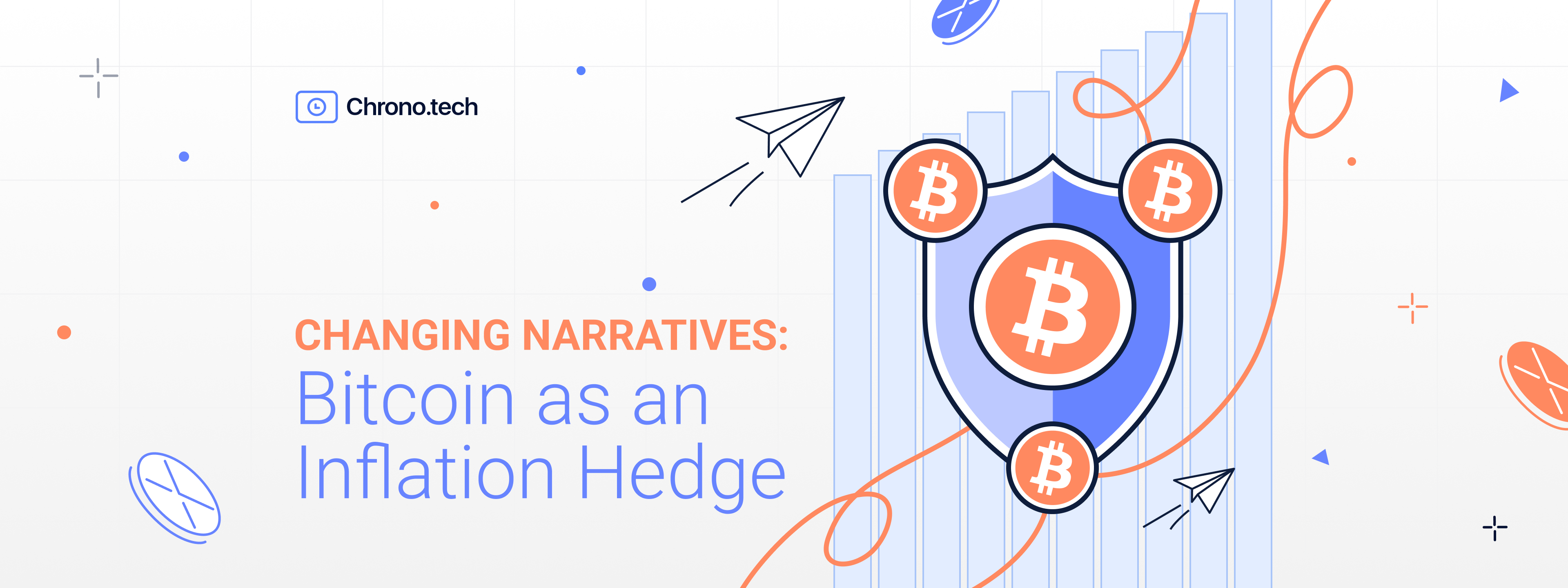In the previous blog we look at how Bitcoin has recently been rehabilitated as atechnology that can promote sustainable power generation and drive ESG goals, rather than undermining them. Another narrative that is coming to the fore – or rather, coming back to the fore – is Bitcoin’s role as a hedge against inflation.
The digital gold narrative has been around since the early days of Bitcoin, but it has fallen in and out of favour as the wild swings of the crypto markets undermine the idea of crypto as a store of value. Now, it’s back again, in a slightly more nuanced and sophisticated form.
This is one of the key benefits of Bitcoin being touted by BlackRock, and particularly by Larry Fink. BlackRock’s CEO has championed Bitcoin as ‘an alternative source for wealth holding,’ as he told CNBC.
We have been here before, in the previous market cycle. But, like so many sequels, this time the budget is higher and the marketing is that much slicker.
Microstrategy And The Melting Ice Cube
Ever since Bitcoin first started to catch on, it has attracted sound money enthusiasts who hated the idea that central banks can steal from citizens by debasing their currencies. Some of the earliest Bitcoiners were gold bugs who saw Bitcoin as an even more inflation-proof currency. With a ceiling of 21 million BTC in existence, bitcoin could be harder money than gold.
This was the idea that Michael Saylor, CEO of tech corporation Microstrategy, picked up and ran with in September 2020. Saylor described Microstrategy’s half-billion-dollar cash reserves as a ‘melting ice cube’, after he realised that inflation was eroding any value earned from government bonds. He chose bitcoin over gold because there is a finite amount that can be mined. Saylor’s move into Bitcoin saw several high-profile corporations follow suit, including Tesla.
There’s a saying that in theory, theory and practice are the same; in practice, they’re not. The reality was that bitcoin’s case as an inflation hedge made sense in theory, but after the market peaked at $69,000 and began its 80% drawdown, the idea of bitcoin as an inflation hedge was harder to maintain. (Saylor, of course, kept buying all through the bear market and is now sitting on over 190,000 BTC, worth over $8 billion.)
2021 wasn’t the right time for the ‘store of value’ narrative, but since that bubble popped, everything has changed.
Money Printing And National Debt
The last crypto bubble started at a time when central banks were printing money hand over fist to deal with the coronavirus pandemic, handing out stimulus checks and buying hundreds of billions of dollars of government bonds to prevent the economy from grinding to a halt. Money was cheap. Deflation, not inflation, was the immediate threat.
It wasn’t long before the chickens came home to roost, though, as all that money printing filtered through the economy and inflation soared. Now, three years later, inflation is still high, and the world has a new set of problems to deal with.
Take the US, which comprises a significant fraction of global GDP. The country’s public debt has soared to an incredible $34 trillion: $100,000 for every person in the country. Worse, it is forecast to rise to $52 trillion by 2033. At present, the US is only able to cover its deficit – the gap between its income and expenditure – by borrowing more.
This has led to further fears of resurgent inflation, with some economists warning that the US is entering a ‘death spiral’, in which it needs to print money to cover its debts, stoking inflation and causing a loss of confidence in the dollar. Perhaps we’re not there yet, but it’s noteworthy that even Federal Reserve Jay Powell has recently said that the US needs to focus on the sustainability of its public debt, calling it an ‘urgent’ priority as public debt grows faster than the economy.
The idea of Bitcoin as a hedge against inflation as the major economies of the world load up on debt has become a common theme on Crypto Twitter. That debt, after all, has to be paid one way or another: either through higher taxes, through money printing and currency debasement or, in the most extreme case, through default. Bitcoin becomes not so much an insurance policy as a lifeline. Not to take steps to preserve your wealth and hedge against that debasement (whether that is done through Bitcoin or something else) is to inflict those costs on future generations. It’s an old narrative, then, but it’s coming back strongly in the current economic environment.
Looking Away From The West
Of course, all this has a very western perspective to it. The reality is that many countries around the world aren’t simply anticipating a time when their currencies might hyperinflate – they are already living through it.
The inflation rate in Nigeria, Africa’s largest economy, is running close to 30%. Argentina’s is set to hit 250% this year. Lebanon’s is around 200%. No wonder these countries – and many others in a similar position – are adopting bitcoin and other cryptocurrencies. Away from mainstream media, crypto already has a very real use case as a store of value.
The West is living through a time when inflation has been running at its highest levels in a generation. Central banks may be on the way to wrestling it back down towards the 2% target, but whether they manage it or not, recent events have brought greater awareness of the shortcomings of conventional monetary policy and the role that assets like Bitcoin might have to play in the coming years if those small groups of decision-makers, who hold so much influence over all of our lives, turn out not to be up to the task.


